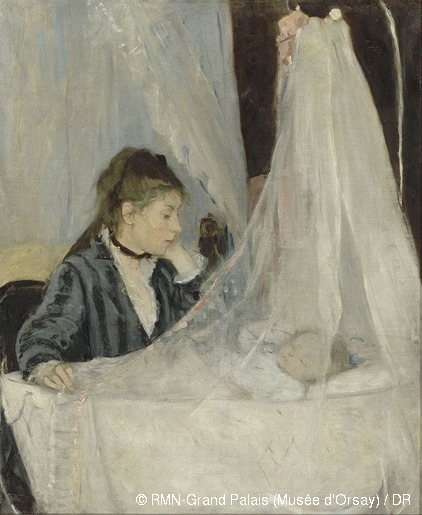Berthe Morisot
A member of the painters of Paris known as the Impressionists, Berthe Morisot worked in small scale, generally using oil paint, watercolor, or pastel, as well as with various drawing media. Morisot painted what she experienced regularly, and this reflected the restrictions she faced based on class and gender in the 19th century. These often included domestic and family life, as well as scenes of contemporary femininity, and the details in her works proved to her female audience that she was sensitive to the fashion and advertising trends of the time. While this was typical of women of this time period, she later worked with other themes, such as nudes.
In Morisot’s The Cradle, she depicts her sister Edma and her newborn Blanche. Since many of her works focused on the day-to-day experiences of the contemporary woman of this time, this was a normal subject for her. In the painting, Edma watches over Blanche as she sleeps, expressing the absorption a mother experiences when a child is born. However, Edma’s face appears passive, almost unemotional. This proves as a sentiment that not all mothers of the time were thrilled to be in this position. By not showing the general happy emotion motherhood is associated with, Morisot affectively captures the emotions the not so eager mothers may have felt at the time.
